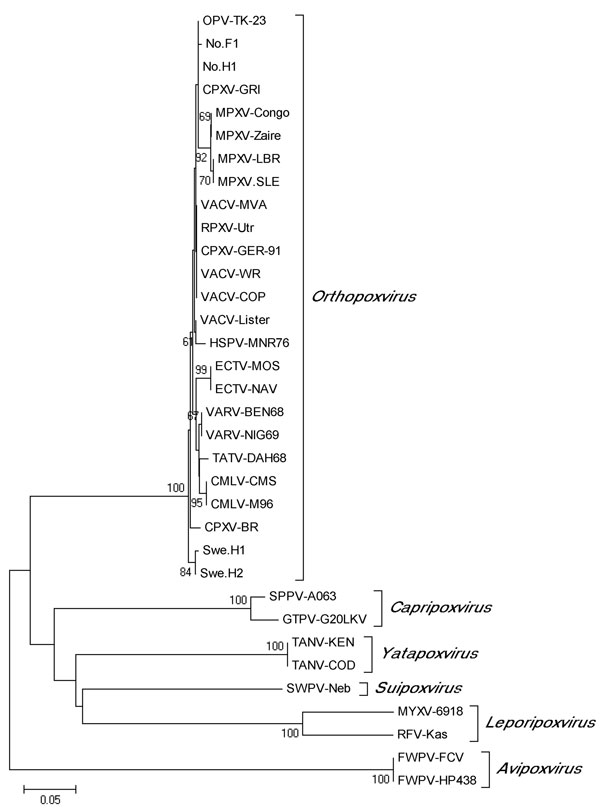Volume 17, Number 4—April 2011
Research
Orthopoxvirus DNA in Eurasian Lynx, Sweden
Figure 3

Figure 3. Phylogenetic tree (neighbor-joining method) generated from alignment of identical partial orthopoxvirus (OPV) thymidine kinase (tk) gene sequences obtained from 21 Eurasian lynx (Lynx lynx) from Sweden (designated OPV-TK-23) and corresponding sequences from cowpox virus isolates and other members of the genus Orthopoxvirus as well as other genera of the family Poxviridae. The corresponding tk gene sequences of 2 fowlpox viruses (genus Avipoxvirus) were used to root the tree. Only bootstrap values >60 are shown. Scale bar represents distances in substitutions per site.
Page created: July 25, 2011
Page updated: July 25, 2011
Page reviewed: July 25, 2011
The conclusions, findings, and opinions expressed by authors contributing to this journal do not necessarily reflect the official position of the U.S. Department of Health and Human Services, the Public Health Service, the Centers for Disease Control and Prevention, or the authors' affiliated institutions. Use of trade names is for identification only and does not imply endorsement by any of the groups named above.